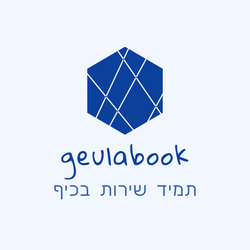With trumpets and the sound of the shofar they cheered before the King Ado-nai -בחצצרות וקול שופר הריעו לפני המלך יהוה ... - We read many times these words from the number of Psalms 6 verse 6. What is so important to us in playing the musical instrument if you can say that the most ancient? Even at the present time before Rosh Hashanah is a holiday called Yom Terua in the Torah? Let's also mention that the shofar is found 72 times in the Bible, also with the sound of the shofar, we received the Torah also with the sound of the shofar, the Messiah will come! What did he improve himself? The shofar is a wind instrument and is made from the horns of a kosher animal, simply put. But by and large, according to Halacha, trumpets made from a ram (adult male sheep) are used for blowing. It can also be added that according to the Torah and specifically in the Mishnah, it is two-year-old lambs, so a lamb is actually one year old. So I sometimes ask if it is a shofar that is not large, it is likely that it is not made from a ram according to the definition of a mishna, but from a press. We must find out the situation in Israel these days, the market is full of invalid shofars because the manufacturers are located in Morocco or China and produce them not according to the regulations of Halacha. There are no rams in Israel whose horns are suitable for trumpets, the horns are imported from the countries of the Maghreb and South Africa. The "Yemeni" shofar is made from gabled kudu horns. They do not use the horn of a bull or of other animals whose horns are not hollow but made of one bone, because they are not called "shuffar", and only the horns that resemble a tube are called shofar.
Among the Jews of Yemen, it is possible to meet the custom of blowing a shofar on Rosh Hashanah made from the horn of an African antelope called "Kudo". This is a long and curled shofar, and this despite the fact that Rambam, whose rulings the Jews of Yemen mostly follow, requires a bent sheep's shofar to be blown on Rosh Hashanah and rejects other shofars. Rabbi Aviran Yitzhak Halevi This custom is not ancient, as only in the last few hundred years has trade between Yemen and Africa become possible.
Rabbi Saadia Gaon - R.S.G - emphasized ten meanings of blowing the shofar:
- The Queen of God reigned as kings reigned - with shofar cheers.
- To remind us that Rosh Hashanah is the time for repentance, otherwise one challenges himself like the one who decides to change the king's laws even though he knows them.
- To mention the status of Mount Sinai and accept upon ourselves what our ancestors accepted upon themselves - "we will do and be heard".
- To remember the words of the prophets that were interpreted by blowing the shofar.
- to mention the destruction of the temple, and at the sound of the shofar to ask for the rebuilding of the temple.
- to mention the covenant of Isaac.
- On hearing the sound of the shofar make us tremble, be horrified and break ourselves before the Creator.
- to mention the Great Judgment Day and to fear it.
- To mention Kibbutz Nidchi Yisrael, and hope for it, as it is written in the book of Isaiah (27:13)
- to mention the resurrection of the dead
All shofars want to emphasize kosher and are produced by the greatest professional and under high level supervision. All shofars with fast delivery to all parts of the world - Israel, USA, Canada, European Union and South America

